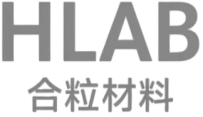1. Technical Breakthrough: “Negative Energy Interface” Redefines Strength Limits
A groundbreaking study published in Science (November 6, 2025) by researchers from the Chinese Academy of Sciences’ Institute of Metal Research has unveiled a novel strengthening strategy for nickel alloys-1.
1.1 The “Negative Energy Interface” Innovation
-
Concept: The team created nanoscale interfaces with negative excess energy (−8.7 to −19.5 mJ/m²) in Ni(Mo) supersaturated solid solutions-1.
-
Method: Using electrochemical deposition followed by amorphous crystallization, they constructed ultra-dense stacking faults with layer spacing as small as 0.7 nanometers-1.
-
Thermodynamic Stability: Density functional theory calculations confirmed these ABCABC/ABAB interfaces are intrinsically stable, overcoming the “size softening” effect that plagues traditional nanostructured materials below 10-15 nm-1.
1.2 Unprecedented Mechanical Properties
The resulting material exhibits extraordinary performance-1-2:
-
Yield strength: 5.08 GPa – approaching the theoretical limit for nickel alloys
-
Young’s modulus: 254.5 GPa – surpassing amorphous alloys and intermetallic compounds of similar composition
-
Complete elastic response until failure in micro-compression tests
1.3 Broader Applications
This “negative energy interface” strategy is theoretically applicable to multiple nickel-based systems (Ni-W, Ni-Ta, Ni-Nb, Ni-Mn, Ni-V), opening possibilities for-1:
-
Next-generation aerospace components requiring extreme strength-to-weight ratios
-
High-precision instruments demanding dimensional stability
-
Cutting-edge applications in energy and transportation sectors
2. Market Dynamics: Supply-Demand Imbalance Continues
Despite technical breakthroughs, the nickel alloy market faces significant economic pressures.
2.1 Price and Inventory Trends
-
Price Volatility: SHFE nickel prices fluctuated between 119,000-123,000 yuan/ton on November 10, 2025, with spot premiums strengthening significantly-4.
-
LME Inventory: Registered warrants decreased by 0.38% to 238,458 tons while canceled warrants increased 8.82% to 14,946 tons, suggesting potential future supply tightness-10.
-
Long-term Position: Both Shanghai and London nickel prices remain near the lower ends of their long-term trading ranges-8.
2.2 Supply-Side Developments
-
Indonesian Policy Shift: Indonesia has frozen new smelter permits for NPI, FeNi, slag, and MHP projects through its OSS licensing system-5.
-
Production Increases: Sumitomo’s Ambatovy project in Madagascar produced 9,000 tons of refined nickel in Q3 2025, a 26.76% quarter-on-quarter increase-7.
-
Contract Terminations: Stellantis terminated nickel-cobalt off-take agreements with Alliance Nickel, citing “challenging market conditions”-9.
2.3 Demand-Side Pressures
-
Stainless Steel Weakness: The stainless steel sector remains sluggish despite supply disruptions, including POSCO’s production halt in Korea-6.
-
Macroeconomic Factors: China’s October CPI showed modest growth (0.2% YoY), but overall manufacturing demand remains subdued-4-6.
3. Application Spectrum: Where Nickel Alloys Excel
Nickel alloys continue to demonstrate irreplaceable properties across critical industries.
3.1 Aerospace & Defense
-
Turbine components: High-temperature strength and corrosion resistance in jet engines
-
Structural elements: Critical airframe components requiring fatigue resistance
-
Navigation systems: Dimensional stability in guidance and control systems
3.2 Energy & Industrial
-
Power generation: Heat-resistant components for gas and steam turbines
-
Chemical processing: Corrosion-resistant equipment for aggressive media
-
Oil & gas: Downhole components and processing equipment for extreme environments
3.3 Emerging Applications
-
Additive manufacturing: Customized components leveraging nickel alloys’ processability
-
Hydrogen economy: Compatibility with hydrogen storage and transportation
-
Electronic applications: Precision components in semiconductor manufacturing
4. Procurement & Processing Guidelines
4.1 Supplier Qualification Checklist
-
Verify compliance with relevant ASTM, AMS, or ISO standards
-
Request mill test reports confirming chemical composition and mechanical properties
-
Assess capability for specialized processing (hot working, heat treatment, surface finishing)
4.2 Processing Recommendations
-
Machining: Use positive rake angles, sharp cutting edges, and rigid setups
-
Heat treatment: Follow precisely controlled atmosphere protocols to prevent contamination
-
Welding: Employ compatible filler metals and proper shielding techniques
-
Surface protection: Consider coatings for enhanced oxidation resistance in extreme environments
4.3 Cost Optimization Strategies
-
Material selection: Match alloy capabilities to application requirements without over-engineering
-
Quantity planning: Leverage volume discounts while minimizing inventory costs
-
Alternative evaluation: Consider emerging alloys with improved performance-to-cost ratios
5. Frequently Asked Questions (FAQ)
Nickel Alloys: Key Questions Answered
Q: What makes the “negative energy interface” discovery significant?
A: This breakthrough enables simultaneous enhancement of both strength and stiffness in nickel alloys, overcoming the traditional trade-off between these properties and pushing performance toward theoretical limits[citation:1].
Q: How are current market conditions affecting nickel alloy availability?
A: While refined nickel production is increasing in some projects, Indonesian permit restrictions and weak demand create a complex supply picture with potential long-term tightness despite current price softness[citation:5][citation:7][citation:10].
Q: Which nickel alloys are most suitable for high-temperature applications?
A: Alloys such as Haynes 230, Inconel 718, and Waspaloy offer excellent high-temperature strength, oxidation resistance, and creep properties, making them ideal for aerospace and power generation applications.
Conclusion: Navigating the Future of Nickel Alloys
The nickel alloy sector stands at a fascinating crossroads, where groundbreaking scientific advances like the “negative energy interface” coexist with complex market dynamics. While researchers push material performance toward theoretical limits, industry must navigate supply chain uncertainties and evolving demand patterns.
For engineers and specifiers, this environment demands heightened attention to both technical capabilities and economic factors. The revolutionary strengthening mechanisms emerging from labs today will enable unprecedented applications tomorrow, even as current market conditions require careful strategic planning.
